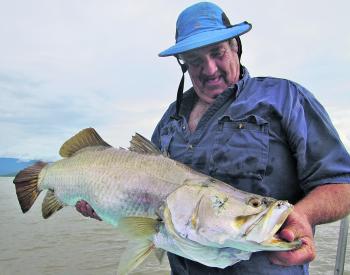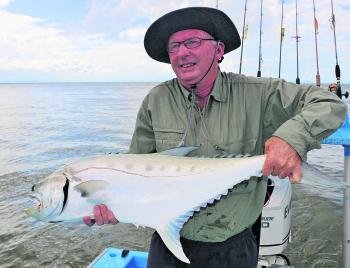It has been quite a different weather pattern since our rain in March. Ever since then we have had a lot of moist and very windy southeasters, which is the opposite of last year.
I think we may start seeing some better wet seasons from now on as the patterns are starting to resemble the start of the wet cycle again. During late May, many parts of FNQ had record rain, which was very un-seasonal, yet three days before had a cool snap from the south. These kind of weather changes are not good for the fishing, but we’ve still had some stability recently with some reasonable fishing to boot.
Reef reports from the past month have been encouraging, with steady catches from all the popular species. It’s mainly been the bigger boats getting out there and the reef always fishes better when its rough, so the constant winds are probably why the fishing has been good.
Some friends of mine also said they had a great day on the crayfish at Otter Reef with a nice half dozen in amongst their catch. Our region has many suitable areas for those who like to chase a few crays. There are plenty of fringing reefs around all the Family group of islands and Gould and Garden islands a bit closer to Cardwell, however you should consult your Marine Park zoning maps first to make sure you are in the right areas.
Gould and Garden islands will be very popular with big tiger sharks during the next couple of months, so don’t wander too far from the shallow fringing reef if you are snorkelling. A big reminder to all that the Brook Islands area is a no-go zone for fishing and is heavily patrolled.
Our barra fishing is a bit sporadic thanks to the change of seasons and the associated weather changes that drive their mood swings. This year, our metre long barra count is down on average but the barra in the 90-100cm bracket are booming, which leaves you scratching your head as to what the ratio change is due to. As the winter approaches, anglers targeting barra would be better off chasing the smaller fish around the drains and run-off pressure points.
One fish species arriving on cue is the big northern bluefin tuna and they have been seen right throughout the channel and it’s no wonder they are there. The channel has been littered with mega schools of baby herring. Sometimes they pop up on the surface close to where we are barra fishing and it’s not hard to get a hook-up sometimes if you flick your barra lure into where they are crashing the bait. Some of them have been very large fish and they are easy to spot in the distance as you just have to look for the small white terns that also feed on the baitfish.
In July, I would expect to see more action on the inshore Spanish mackerel run as well as a few small marlin showing up on the baitschools halfway to the reef.
Pelagics inshore should all start putting on a good show with the GTs and golden trevally also entering their prime periods of the year.
All the tuna species will get better in numbers too, so this is really the start of the best period of the year for those who just love sportfishing for all pelagics.
As far as the barra and estuary species go, it will all depend on the weather patterns and how much stability comes with it.
We are almost ready to launch our two new courses (threadfin tactics and wonky holes) on the new site, so head over to www.ryanmoodyfishing.com for all the info.
• If you would like to book a charter or join our fishing community for some great fishing competitions etc, head on over to www.ryanmoodyfishing.com. And you could also win a free charter drawn twice a year.
Reads: 909
Chris with a nice 94cm barra caught on a shallow hardbody lure.

Lots of pelagics including queenfish are starting to show up in the channel.




